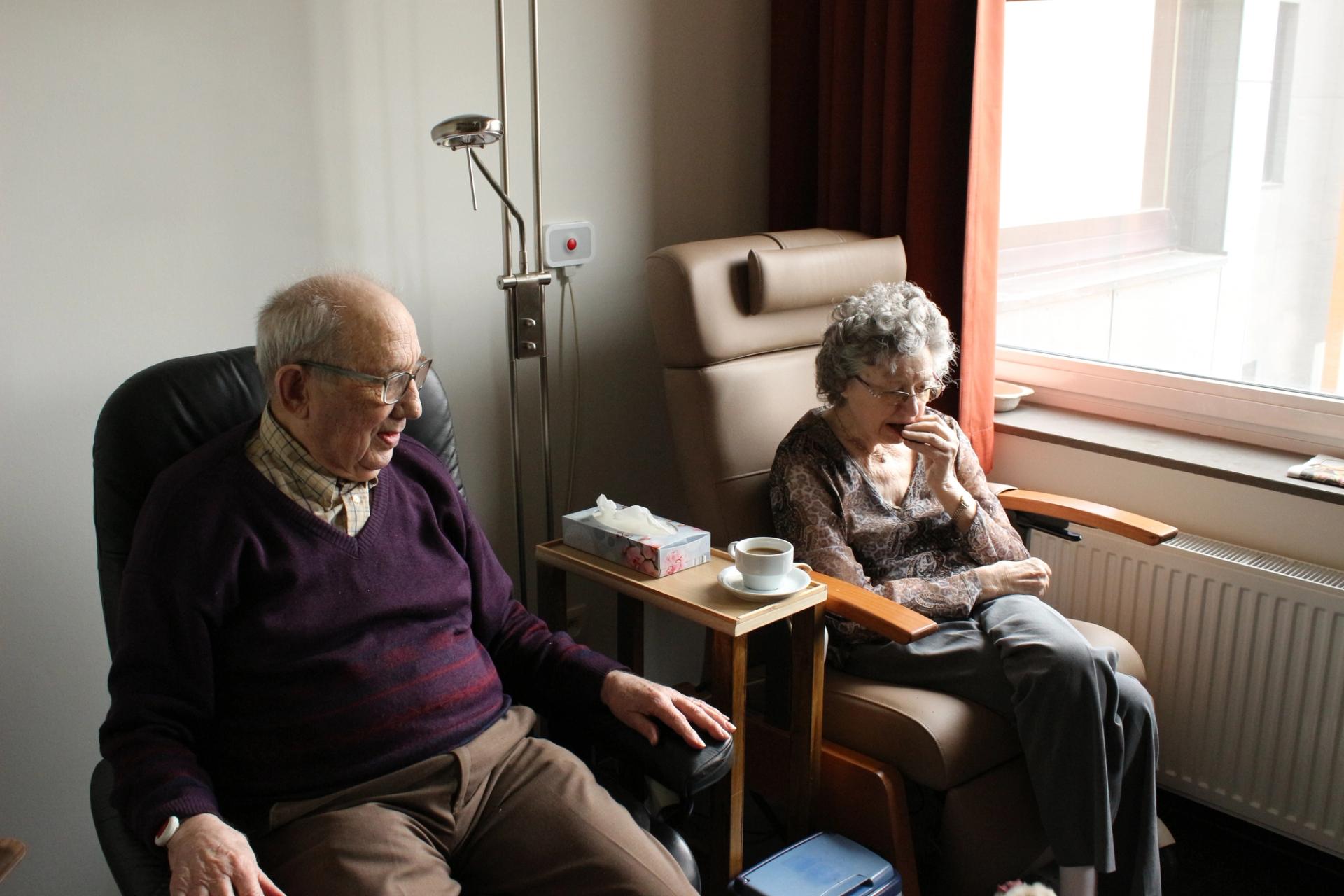
Managing adult malnutrition in the community, 2017
Multidisciplinary consensus panel representing bodies including RCN, RCGP, BDA and BAPEN among other...
Multidisciplinary consensus panel representing bodies including RCN, RCGP, BDA and BAPEN among others
This multi-professional consensus guideline aims to support healthcare professionals in the community, including general practice nurses, to identify and manage individuals at risk of malnutrition and particularly disease-related malnutrition, including the appropriate use of oral nutritional supplements (ONS).
Malnutrition can refer to either over or undernutrition, but this guide focuses on undernutrition, defined as a deficiency of energy, protein and other nutrients, that causes adverse effects on the body, the way it functions, and clinical outcomes. Most malnutrition is disease-related, although some social and mechanical factors (e.g. dentition) can also have an impact.
Around 3 million people in the UK are malnourished or at risk of malnutrition, of whom approximately 93% live in the community. Malnutrition affects 11% of people at GP practices.
Clinical consequences of malnutrition
- Increased falls risk
- Impaired recovery from illness and surgery
- Poorer clinical outcomes and higher mortality
- Impaired immune response
- Reduced muscle strength, frailty
- Impaired wound healing
- Impaired psycho-social function.
Malnourished people have more hospital admissions and readmissions, longer length of stay in hospital, and more GP visits. Malnutrition costs £19 billion per year in England, taking account of health and social care costs. NICE says that substantial cost savings can be made by identifying and treating malnutrition, by improving nutritional status and clinical outcomes.
At risk groups
- Chronic disease: COPD, cancer, gastrointestinal disease, renal or liver disease and inflammatory conditions such as rheumatoid arthritis or inflammatory bowel disease
- Progressive neurological disease: dementia, Parkinson’s disease, motor neurone disease
- Acute illness: where adequate food is not eaten for more than 5 days (more common in hospital settings)
- Debility: frailty, immobility, old age, depression, recent discharge from hospital
- Social issues: poor support, housebound, difficulty obtaining or preparing food
- Rehabilitation: after stroke, injury, cancer treatment
- End of life/palliative care
When to screen
- Opportunistically – on first contact (new patient registration) or other opportunity e.g. long term condition review
- Upon clinical concern, especially if patient presents with unplanned weight loss, appears thin (loose fitting clothes), poor wound healing, pressure ulcers, apathy, poor appetite, difficulty swallowing, altered bowel habit or prolonged intercurrent illness
How to screen
Use a validated screening tool such as MUST (Malnutrition Universal Screening Tool) available at www.bapen.org.uk
If using clinical judgement, the following criteria can guide risk assessment:
- Unlikely to be at risk (low risk): Not thin, weight stable or increasing, no unplanned weight loss, no reduction in appetite or intake
- Possibly at risk (medium risk): Thin as a result of disease/condition or unplanned weight loss in previous 3-6 months, reduced appetite or ability to eat
- Likely to be at risk (high risk): Thin or very thin and/or significant unplanned weight loss in previous 3-6 months, reduced appetite or ability to eat and/or reduced dietary intake.
Management
People who are malnourished or at risk of malnutrition should have a care plan
When possible, treat or manage the factors contributing to the cause of malnutrition
Consider a multidisciplinary team approach to determine optimal nutritional strategy, according to the patient’s clinical condition and social situation. The team may include GP, dietitian, nurse, occupational therapist, physiotherapist, speech and language therapist.
Management options include:
- Providing advice on a balanced diet
- Advice to maximise oral intake, such as food fortification, snacks and nourishing drinks
- Oral nutritional supplements (ONS)
- Practical measures such as assistance with eating, ensuring ability to shop (physical and financial) and food texture modification
Optimising nutritional intake
Adjusting choices of every day foods, for example, cheese and full fat milk, can increase the energy and protein content of food consumed without increasing its volume.
Encourage small frequent meals and snacks with a focus on nutrient rich foods and fluids.
Care should be taken when using food fortification to ensure that nutritional requirements, including protein and micronutrients, are met: consider multivitamin and mineral supplements.
Acute and chronic disease may adversely affect appetite and the ability to source, prepare and consume meals and drinks. Dietary advice can only be effective it it is feasible, acceptable and acted on by the individual or carer.
NICE (CG32) recommends considering ONS to improve nutritional intake for people who can swallow safely and are malnourished or at risk of malnutrition.
Prescribable indications for standard ONSThe Advisory Committee for Borderline Substances states that ONS can be prescribed for the following conditions:Disease-related malnutritionShort bowel syndromeIntractable malabsorptionPre-operative preparation of undernourished patientsProven inflammatory bowel diseaseFollowing total gastrectomyDysphagiaBowel fistulae
ONS are typically used in addition to the normal diet and not as a food replacement, when diet alone is insufficient to meet daily nutritional requirements.
Encourage patients to take ONS when they most feel like taking them, including between meals as a snack, first thing in the morning or before bed. ONS can also be incorporated into every day foods such as puddings and sauces.
ONS are a clinically and cost effective way to manage malnutrition, particularly among those with a low BMI (>20kg/m2). Clinical benefits include:
- Increased energy and protein intakes
- Functional and quality of life benefits
- Reductions in complications (e.g. pressure ulcers, poor wound healing, infections), hospital admissions and readmissions, and mortality (in acutely ill older people).
Clinical benefits are seen with ONS 300-900kcal/day (i.e. 1-3 ONS servings) typically over 2 – 3 months, but supplementation periods may be shorter or longer according to clinical need.
Standard ONS provide approximately 1.5–2.4kcal/ml (300kcal), 12g of protein and a full range of vitamins and minerals per serving.
A range of different types of ONS are available to benefit groups with specific needs:
- High protein: recommended for patients with COPD, wounds, some types of cancer, frailty and for post-operative patients
- Fibre-containing: for people with GI disturbances
- Pre-thickened: for patients with dysphagia or impaired swallow. Seek speech and language therapist advice
- Low volume high energy: for patients who cannot consume larger volumes, e.g. those with COPD.
Commencing ONS
- Aim to establish patient preferences, e.g. milk or juice, sweet or savoury
- Test preferences and compliance with a ‘starter pack’ or samples
- Prescribe preferred product/flavours: 2 ONS per day (1-3 daily) for up to 3 months
- For those who require ONS as sole source of nutrition or with complex nutritional needs refer to a dietitian
- If poor compliance, explore reasons and refer to dietitian or other healthcare professional.
Discontinuing ONS
Discontinue ONS when adequate oral intake is established, targets (e.g. weight gain, increased muscle mass, improving strength) are achieved and the individual is stable and no longer at risk of malnutrition. Continue to monitor to check patient remains stable. (Consider progressive or relapsing remitting conditions e.g. COPD, IBD).
Useful resources
British Association for Parenteral and Enteral Nutrition (BAPEN)Key documents and reports including MUST toolkit, explanatory booklet, e-learning and MUST calculator. www.bapen.org.uk NICE CG32: Nutrition Support for Adults https://www.nice.org.uk/Guidance/cg32NICE QS24: Nutrition Support in Adults https://www.nice.org.uk/guidance/qs24 British Dietetic Association www.bda.uk.com Managing Adult Malnutrition in the Community www.malnutritionpathway.co.ukRange of leaflets for patients at risk of malnutritionEating Well – Advice for patients and carers http://www.malnutritionpathway.co.uk/library/pleaflet_green.pdfMaking the Most of Your Food – Advice for patients and carershttp://www.malnutritionpathway.co.uk/library/pleaflet_yellow.pdfNutrition Drinks (known as Oral Nutritional Supplements) – Advice for patients and carers http://www.malnutritionpathway.co.uk/library/pleaflet_red.pdf Leaflets for patients with COPDhttp://www.malnutritionpathway.co.uk/leaflets-patients-and-carers
Reference
Managing Adult Nutrition in the Community was developed by a multi-professional consensus panel representing the RCN, the RCGP, BAPEN, and the Association of UK Dietitians (BDA) among others, and is endorsed by NICE. It was funded by an unrestricted educational grant from Nutricia Advanced Medical Nutrition. Download the full guideline at: http://www.malnutritionpathway.co.uk/index
Related guidelines
View all Guidelines
